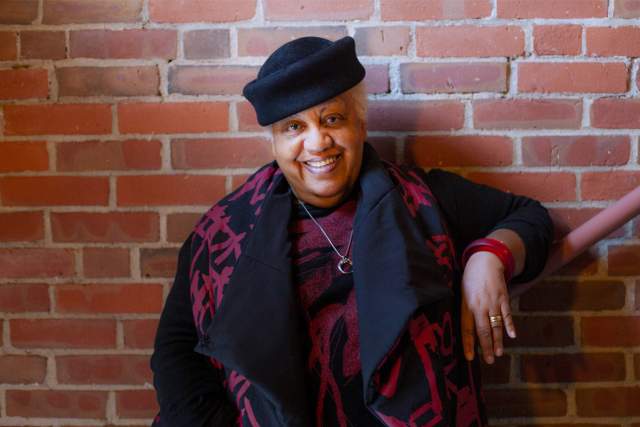Stacy Blake-Beard was still early into her doctoral program at the University of Michigan when she began to see the importance of mentoring emerge in her research.
She soon found there was very little in the literature on mentoring across dimensions of diversity, so she decided to focus specifically on studying mentoring across different ethnic backgrounds. This focus is evident in her thesis title: “The Changing Face of Mentoring in Diverse Organizations.” She then began to research gender and mentoring in different populations beyond the U.S. Eventually, through a Fulbright Research Scholarship, Blake-Beard studied the impact of mentoring relationships on the careers of midlevel and advanced professional women in India.
Today, Blake-Beard is a member of Tuck’s faculty, after teaching at Harvard’s Graduate School of Education, the Simmons College School of Business, and the Indian School of Business. She sees mentoring as a developmental process critical to making people feel supported and prepared to advance their career and has therefore focused on both mentoring and leadership as a researcher, teacher, and coach. Blake-Beard has also worked with Fortune 100 companies in the development and implementation of formal mentoring programs, and a common thread across these institutions—whether educational or corporate—is the importance of mentoring as a process for welcoming and enhancing diversity.
What does it mean to mentor someone?
Mentoring can be explored in so many ways. Having a definition helps—I find this one useful: “Mentoring is a dynamic, reciprocal, personal relationship between a more experienced person (mentor) and a less experienced person (mentee) aimed at promoting the development and fulfillment of both.” This concise description offers so much in terms of understanding the process. For example, mentoring relationships are often thought of as someone older guiding a younger person. But that is not always the case; experience is as important—if not more so—than age. Reciprocity is also an important component of mentoring: both partners have an opportunity for gain. Mentoring really is dynamic—these relationships are in constant change.
How does someone find a mentor or look to mentor another person in business?
There are several steps that I typically recommend in starting and maintaining mentoring relationships. Some questions are connected to the particular role of mentor or mentee; others are the same for both. For mentees, I suggest several: What are your goals—why do you need a mentor? Have you surveyed the landscape to see who might assist you? Do you have a solid approach that will encourage a potential mentor to want to support you? Have you determined how you might be of assistance to a mentor? For mentors, I might ask, What strengths do you bring to the table? Are you willing to offer constructive, possibly challenging feedback? How comfortable will you be in drawing on your network to support your mentee? Then, there are concerns/opportunities I ask both mentors and mentees to consider: Are you willing to devote the necessary time to the relationship? Because the most common, tragic end to mentoring relationships is an underestimation of the amount of time and attention required. I also ask both how they will look for and welcome diversity—ethnicity and gender are often primary, but aspects such as social class, learning style, birth order, and more can also impact mentoring relationships. And I ask mentees and mentors to think about how they will handle differing opinions and possible conflict. They need to ask themselves whether they are prepared to accept the possibility, the probability, that they will be different from one another—and to know that this is ok!
I ask mentees and mentors to think about how they will handle differing opinions and possible conflict. They need to ask themselves whether they are prepared to accept the possibility, the probability, that they will be different from one another—and to know that this is ok.
—Stacy Blake-Beard
Can researchers measure the effects of something like mentoring?
There are many ways to study the impact of mentoring, and important researchers who have studied it. Research about mentoring from a management perspective really started in the ’80s with Professor Kathy Kram. Professor David Thomas’s focus on mentoring and race and Professor Belle Rose Ragins’s centering on mentoring and gender were instrumental to the development of the field. The research of Professors Ella Bell Smith and Stella Nkomo was a sanctuary for me, and their book, Our Separate Ways: Black and White Women and the Struggle for Professional Identity, was one of the few places where I saw experiences similar to mine. There are surveys and instruments that identify and measure different dimensions of mentoring relationships. Analyzing the relationship between mentoring and several important outcomes—such as compensation, satisfaction, retention, and productivity—yields interesting results. There are also studies of mentoring that are based on interviews, case studies, and other approaches that are not numerically based. I have used both quantitative and qualitative methods in my research. Each has advantages and disadvantages; each contributes to the understanding of mentoring.
What are you teaching at Tuck?
I am faculty for the Managing Organizations course with Professor Adam Kleinbaum. This course is critical to the development of our students as the leaders they will be after they leave Tuck, and working with them has been gratifying. I was also invited to create a course and developed one on mentoring, called Mentorship, Sponsorship and Other Developmental Relationships. In it, students engage with research on mentoring, draw from their own experiences, and contemplate how they can apply what they’ve learned in class. Each aspect of the course reflects a commitment to understanding how accessing mentoring can lead to career enhancement, as well as personal well-being. I’ve appreciated teaching on the topic of mentoring, which is acknowledged as being so important. I’m also working with the Initiative on Workplace Inclusion, being led by Professor Ella Bell Smith, and a project being led by Clinical Professor Daniella Reichstetter T’07. And I’m continuing my research with colleagues outside of Tuck, right now studying peer mentoring and also exploring mentoring as a DEI initiative with Professor Audrey Murrell.
You taught remotely at first, then arrived on campus after the COVID lockdown was lifted. Have you noticed anything particularly unique about teaching at Tuck?
There are many aspects of Tuck that I’ve appreciated—the level of support offered, for one thing. Across different functions and in different places, this attention from observant colleagues makes my job so much easier. More than that, this support reinforces that I and other members of the Tuck community are valued, and I am thankful for that. Another aspect that stands out to me is the special role that alumni have. Their dedication to Tuck lasts well beyond their physical presence in Hanover—to me, this connection is exemplified by how alums consistently identify by Tuck year. One of my dearest friends from graduate school, Regina O’Neill, is a member of the Tuck Class of 1990 and a professor at Suffolk University who studies mentoring. I appreciate the care and concern that alumni show in their commitment to Tuck—all of Tuck, especially current students, benefits from their dedication and willingness to have mentoring as a conduit to community and caring.
This story originally appeared in print in the winter 2023 issue of Tuck Today magazine.

